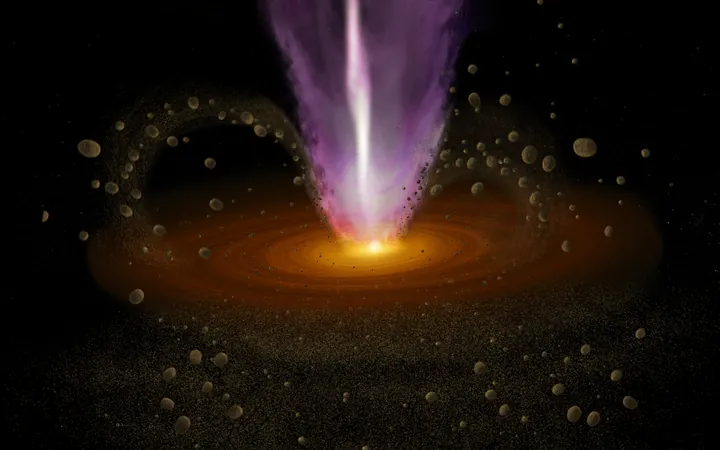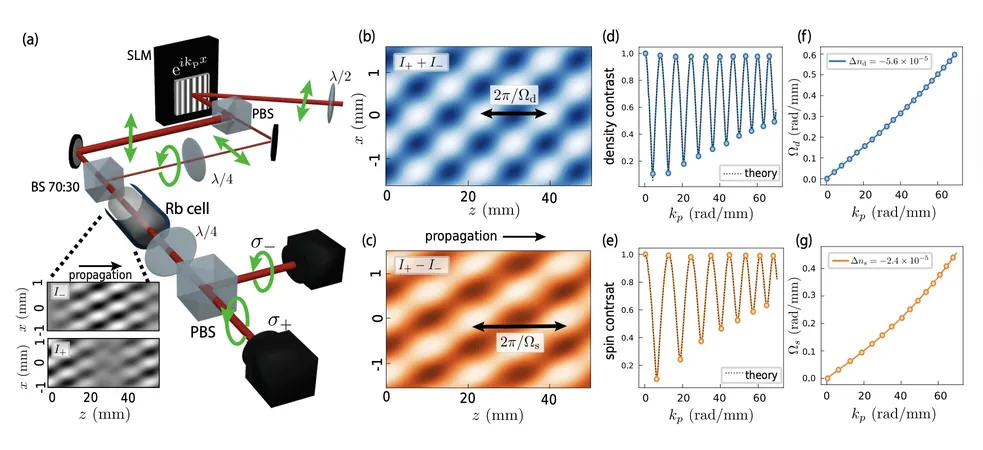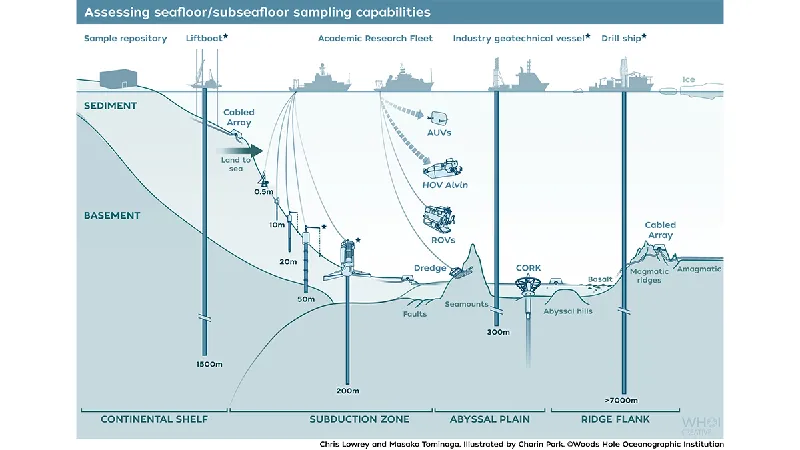
Cosmic Breakthrough: Ancient Grains Shed Light on Planet Formation
2025-06-12
Author: Daniel
A Stellar Discovery Unveiled
In an astonishing revelation, scientists using the Atacama Large Millimeter/submillimeter Array (ALMA) have cracked a significant mystery surrounding the birth of rocky planets, including Earth, in the universe. For years, researchers have grappled with understanding how tiny dust particles coalesce into larger "pebbles" capable of forming planets without being sucked into their parent stars or fragmented by collisions—this daunting challenge is known as the "meter-size barrier."
The Groundbreaking FAUST Initiative
Led by over 50 astronomers and chemists from top scientific institutions worldwide, the effort—dubbed the "Fifty AU Study of the chemistry in the disk/envelope systems of Solar-like protostars" or FAUST—has produced groundbreaking insights. This multi-faceted study focuses on the chemistry within the dense molecular gas surrounding Solar-like protostars, and, for the first time, it has successfully detected millimeter-sized dust grains, about 10,000 times larger than average interstellar dust.
Winds of Change in Planet Formation
Researchers discovered these massive dust grains embedded in the walls of a protostellar outflow cavity within the L1551 IRS5 binary system. The findings suggest that these grains are transported from the dense inner regions of the protostellar disk by winds and deposited in locations that prevent their return, giving them ample time and opportunity to clump together. This critical process may help topple the long-standing barriers to planet formation.
A Glimpse into Our Cosmic Origins
Giovanni Sabatini, a leading scientist with the National Institute for Astrophysics in Florence, remarked, "This discovery not only offers a new avenue for planet formation but also presents fresh insights into how our own Solar System might have come to be." Claire Chandler, a co-PI of the FAUST collaboration, echoed this excitement, emphasizing that these findings could reshape our understanding of the rich variety of planetary systems throughout the galaxy.
The Bigger Picture of ALMA and NRAO
ALMA, a collaborative international astronomical facility, plays a pivotal role in advancing our knowledge of the cosmos. Funded by a consortium of global partners including the European Southern Observatory and the U.S. National Science Foundation, ALMA is revolutionizing our perception of star and planet formation. Through ongoing explorations like FAUST, humanity takes one step closer to unraveling the mysteries of our cosmic origins.





 Brasil (PT)
Brasil (PT)
 Canada (EN)
Canada (EN)
 Chile (ES)
Chile (ES)
 Česko (CS)
Česko (CS)
 대한민국 (KO)
대한민국 (KO)
 España (ES)
España (ES)
 France (FR)
France (FR)
 Hong Kong (EN)
Hong Kong (EN)
 Italia (IT)
Italia (IT)
 日本 (JA)
日本 (JA)
 Magyarország (HU)
Magyarország (HU)
 Norge (NO)
Norge (NO)
 Polska (PL)
Polska (PL)
 Schweiz (DE)
Schweiz (DE)
 Singapore (EN)
Singapore (EN)
 Sverige (SV)
Sverige (SV)
 Suomi (FI)
Suomi (FI)
 Türkiye (TR)
Türkiye (TR)
 الإمارات العربية المتحدة (AR)
الإمارات العربية المتحدة (AR)